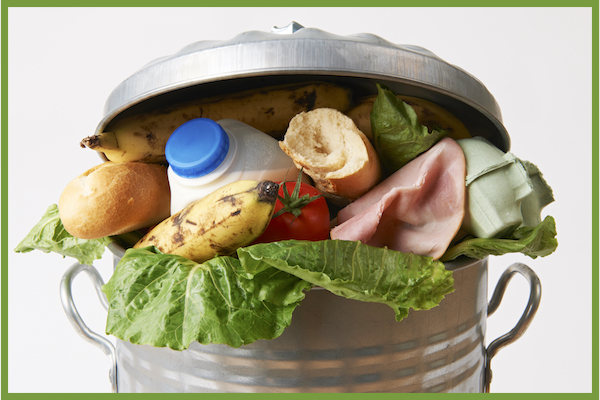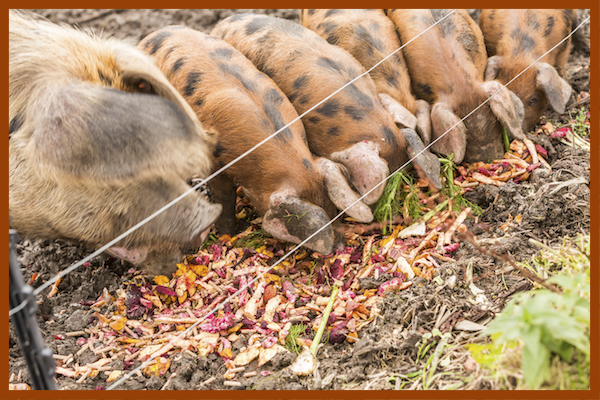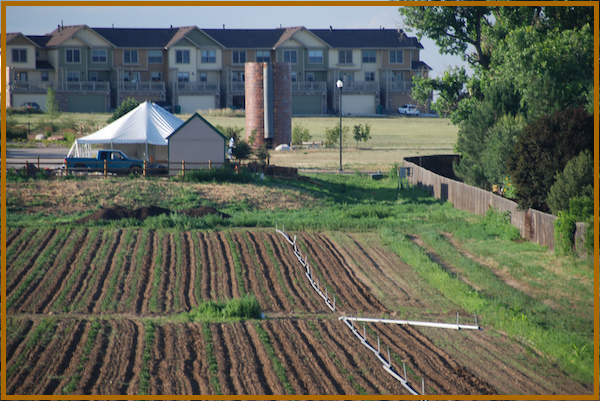With the election of Donald Trump as president (as well as continuing House and Senate Republican majorities), the new political landscape likely heralds a great deal of change for many aspects of American life, from domestic policies affecting food, health, and the environment, to foreign policies surrounding immigration and free trade. The Harvard Law School Food Law and Policy Clinic (FLPC) works with individuals, communities, and government agencies across the country on a range of food policy projects. Since the election, many of our partners have reached out to us, eager to know what these results will mean for key food and agriculture priorities for the nation, and for the current and future work of the Clinic.
Based on the limited discussion of food policy in this election, it is too soon to tell which policies will take center stage and which will recede, what food system gains from the past eight years face elimination, or what new opportunities might emerge. However, since election day, FLPC has been analyzing our projects and initiatives, consulting with partners and clients, and reviewing policy statements from the Republican Party Platform and from the campaign trail in order to chart a path forward. Below, we share our thinking on key food system advocacy priorities for the next four years, elaborating on some of the projects we will retain and describing how we will pivot to address the new political landscape.
 Reducing Wasted Food
Reducing Wasted Food
An estimated 63 million tons of food is wasted annually in the U.S., presenting a grave threat to our economy, health, and environment. One of FLPC’s premiere areas of work is in identifying and advocating for policy changes at the federal, state, and local level to support food waste reduction, increased donation of healthy and wholesome food, and the treatment of food as the vital natural resource that it is.
Reducing the amount of wasted food has seen bipartisan support over the past few years because it is more efficient, economical, and environmentally friendly — it makes sense. This year the U.S. House Committee on Agriculture held the first-ever federal hearing on food waste, entitled Food Waste from Field to Table, and FLPC ’s director, Emily Broad Leib, testified on our top federal policy recommendations to reduce the waste of healthy and wholesome food. FLPC is recognized as a national leader on providing research and policy recommendations to reduce food waste, and has published several reports, legal guides, and fact sheets on policy opportunities to divert surplus food away from the landfills. These publications include a legal guide on the federal enhanced tax deduction for food donations, a legal guide on feeding leftovers to livestock –which contains the first-ever catalogue of state and federal regulations for feeding food scraps to livestock — and a state and local policy toolkit with a wealth of policy opportunities to reduce food waste.
FLPC’s work in this area has made real progress. In September 2013, FLPC published The Dating Game: How Confusing Food Date Labels Lead to Food Waste with the Natural Resources Defense Council, analyzing the laws regarding expiration dates and explaining how these unclear and unregulated labels contribute to an alarming amount of unnecessary food waste. Since the publication of that report, FLPC has continued to bring national attention to the challenge of confusing date labels. This persistence paid off in 2016, when our partners in the House and Senate introduced federal legislation to reform the expiration date labeling system, and with commitments from industry to work towards standard date labels.
The attention and commitment to reduce food waste goes beyond the issue of date labels. In 2015, the USDA and EPA jointly announced the nation’s first-ever food waste reduction goal of cutting our food waste by 50 percent by the year 2030, and this month, over 15 major U.S. companies, including General Mills, PepsiCo, Unilever, and Walmart, pledged to help the U.S. meet this goal. At the same time, we continue to see unprecedented interest in reducing the amount of wasted food by state and local policymakers across the country.
We believe this momentum will continue as we enter the new administration, because reducing the amount of wasted food makes sense for health, the economy, and the environment. We are confident that state and local interest in this topic will stay strong as well. Over the next four years, FLPC plans to stay at the forefront of policy research and advocacy to reduce food waste in the U.S.
 The Supplemental Nutrition Assistance Program (SNAP) and the Farm Bill
The Supplemental Nutrition Assistance Program (SNAP) and the Farm Bill
The Supplemental Nutrition Assistance Program (SNAP) is the largest nutrition assistance program in the U.S., and provides supplemental grocery purchasing power for more than 40 million Americans each month. However, this program faces a steep uphill battle in the incoming Congress and administration to maintain its current funding. SNAP is part of the Farm Bill, legislation passed every 5-7 years that provides authorization and funding for the bulk of farm and food programs across the nation. The next Farm Bill will likely pass in 2018. SNAP faced major legislative hurdles in the current Farm Bill (passed in 2014), including efforts to reduce the cost of the program by cutting benefits and limiting eligibility. The new Congress will likely reprise those efforts to remove SNAP from the Farm Bill; to find ways to cut program benefits, such as by eliminating categorical eligibility; to change the funding structure so that it is funded by providing a fixed amount of funding or a “block grant” to states, meaning that less money will be available overall; and to take other steps to reduce its ability to support the many American families who rely on the program to put food on the table each month.
We will work hard in the coming months to prepare for challenges to SNAP and to identify the best policy recommendations and arguments for maintaining and strengthening this program. In addition to concerns about SNAP, other changes in the next Farm Bill will likely span the major commodities, crop insurance and conservation programs, while recent progress made in programs that support beginning farmers, local and regional food systems, and organics will likely be under threat.
We will organize our messages around this and other key Farm Bill priorities with our partners through the National Farm Bill Research Consortium, FLPC’s newest initiative. This Consortium brings together faculty, staff, and students from nine programs at seven law schools, and law students from many others, to learn and work together on the Farm Bill. The Consortium aims to build a bench of legal scholars and law students prepared to use their expertise to engage in the writing, implementation, and evaluation of current and future farm bills. FLPC will continue to work with the Consortium to build an informed and invested legal community, capable of advancing ambitious policy reforms and defending the progress made in years past. We believe this capacity and knowledge will be more important than ever.
 School Food
School Food
FLPC has worked to improve the quality of school meals, to make it easier for children to access those meals, and to increase the amount of fresh and local foods that are utilized in schools. The Obama Administration’s policies have been groundbreaking in this regard. Most notably, the 2010 Child Nutrition Reauthorization (called the Healthy, Hunger-Free Kids Act (HHFKA)) — which sets the policies and funding levels for all federal child nutrition programs — brought many updates to the school food landscape. HHFKA updated the nutrition standards for school meals for the first time in fifteen years and created the first nutrition standards for so-called “competitive foods,” or foods sold a la carte in the cafeteria, in vending machines, and at bake sales. In addition, the HFFKA’s Community Eligibility Provision made it easier for schools in low-income neighborhoods to provide free meals to all students without the administrative burden of individual applications. The HFFKA expired in September 2015, and in early 2016 FLPC published a policy brief outlining our priorities for the next Child Nutrition Reauthorization. Yet, despite extensive public debate and draft bills from both the House and Senate, passage of a new Child Nutrition Reauthorization has stalled in Congress and now likely will not pass until the new administration takes office.
Looking at the proposals of Congressional Republicans in this administration, and reading the tea leaves as to likely priorities for the Trump Administration (school meals have not featured prominently in President-elect Trump’s top policy priorities; however, Rep. Robert Aderholt, a member of Trump’s agriculture advisory committee noted that he “would be very surprised if we don’t see some major changes on the school lunch program”), we believe there will be serious efforts to roll back nutrition standards and attempts to limit access to free and reduced-price meals. While the Senate’s draft 2015 Child Nutrition Reauthorization bill was heralded as a compromise that kept many of HFFKA’s key provisions in place, the House version provides greater insight into what could come out of a Trump Administration and Republican-controlled Congress. In terms of nutrition, it would block sodium reduction targets for school meals and create exemptions from the new nutrition standards for certain competitive foods. In terms of program enrollment, it would raise the income threshold for the Community Eligibility Provision, which would eliminate the program for an estimated 7,000 schools currently participating, and convert school meal programs to block grants in three states, signaling what could become a broader push towards block granting school meals nationwide. Like block granting SNAP, this would mean that there would be less money available overall for school meals and, in some states, eligible students may not receive school meals. In light of these impending challenges, FLPC plans to increase our focus and attention to school food, and will continue to work for policies that provide healthy and affordable meals to all Americans, especially our children.
 State and Local Food Policy Opportunities
State and Local Food Policy Opportunities
State and local food policy efforts, often driven by food policy councils, have flourished in the past decade. The Center for a Livable Future at Johns Hopkins University reports that there are 246 state and local food policy councils nationwide, representing a nearly fourfold increase over the past 8 years. States and localities have charted a bold course, with legislative and administrative efforts – such as trans fat bans, menu calorie labeling, taxing sugar-sweetened beverages, and using zoning rules to increase available land for food production – that have widely improved the landscape for healthy and sustainable food. Many of these policies that started at the state or local level have been picked up by the federal government and expanded nationally; likewise, states and localities have devised groundbreaking new programs that have been picked up by the federal government and expanded nationally, such as healthy food financing programs and doubling SNAP dollars at farmers markets.
One of FLPC’s core areas of work involves supporting food policy councils and state and local food policy advocates. Over the past five years, FLPC has published three food policy toolkits for advocates – one focused on state policy, one on local policy, and one for Navajo Nation – and is currently finalizing an update to our local policy toolkit. In addition, FLPC provides individual technical assistance to food policy councils across the country, in places as varied as Mississippi, Memphis, Boston, Rhode Island, and West Virginia. While we will continue to fight for strong federal food policies, we acknowledge that the incoming Congress and administration may foreclose some policy opportunities at the federal level. However, the policy opportunities to continue creative and effective policymaking at the state and local level are as strong as ever, and the infrastructure and networks to support such action are firmly in place. FLPC looks forward to continuing to work with food policy councils and other state and local advocates to identify and implement innovative, effective policies. Proactive state and local policies will be even more important in the next four years.
 Rural Development & Rural Food Systems
Rural Development & Rural Food Systems
FLPC grew out of our Director’s work in the Mississippi Delta, a region where FLPC has a longstanding commitment to support improved health outcomes and economic opportunities, and has hosted a fellow for the past eight years. As a result of our roots in the Delta, FLPC’s mission includes an explicit commitment to support the most vulnerable communities, which has led us to partner with many rural communities across the nation. We conducted a range of long-term and short-term projects in many other rural areas, such as Navajo Nation, West Virginia, and throughout the Appalachian region, in partnership with the Appalachian Diabetes Coalitions (including counties in Kentucky, Tennessee, and Mississippi).
Through this work, we have come to understand the unique and significant challenges facing rural communities, some of which played a key role in this election. We recognize that progress in rural America is not as simple as getting it on the agenda—it will require innovative ideas, strong advocates, and ongoing vigilance to ensure these voices are heard. We will continue to work with these communities, and as rural issues claim a national limelight, we will help our community partners capitalize on this opportunity to enact policies that uplift and sustain rural communities and rural food systems.
 Other Issues
Other Issues
In addition to FLPC’s priorities elaborated above, there are several other key areas where food policy may be affected under the incoming Congress and administration. The Food Safety Modernization Act, enacted in 2011 and implemented by the Obama Administration to overhaul the nation’s food safety laws, could face regulatory changes under the Trump Administration. Environmental regulations that ensure that food production is sustainable and safe are on the chopping block. Immigration reform has been a central platform of the Trump campaign, and these proposed immigration policies would significantly impact the food and agriculture labor force and the lives of many vulnerable food and agricultural workers. Eight years of investment in local and regional food systems and direct food marketing may see a decline in resources and attention. Many other food regulations are also potentially at risk, including the updated Nutrition Facts Panel, the menu calorie labeling rule, country-of-origin labeling requirements for beef and pork products, and the new genetically-engineered disclosure law.
FLPC will remain vigilant to these and many other pressing food system issues, and will adjust our projects and priorities as needed in an effort to maintain the gains from the past eight years and continue to make progress in our food system. We will work to stay at the cutting edge by continuing to support clients and communities across the country, convening and strategizing with key partners, and providing legal and policy guidance on issues that impact the health, sustainability, equity, and vitality of our food system.
Sign up for FLPC’s quarterly newsletter with news, updates, events, job opportunities across the country, and more.


Health Law & Policy, Commentary
Braidwood Management v. Becerra: Updated FAQs for Health Advocates and Providers
July 22, 2024